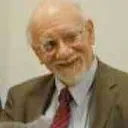Stay in the Loop
BSR publishes on a weekly schedule, with an email newsletter every Wednesday and Thursday morning. There’s no paywall, and subscribing is always free.
Beach reading for the technological society
The Sloan Technology Series

People who plan roads, bridges, sewers, and so forth are called civil engineers. Civilization happens in cities, where civil society is possible, because of civil engineers. Cities are fed by roads, drained by sewers, watered by pipes that they lay down. There have been barbarian poets and composers, even painters and some lawyers, but never a barbarian civil engineer.
That’s a quote from a short story, “My Advice to the Civilized,” by a science fiction writer named John Barnes. He could have said something similar about most branches of engineering. Cities are lit by lighting systems, administered by computer systems, and supplied by trucks, trains, and planes created by engineers from every specialty. The cultural life dissected in the Broad Street Review rests on a technological infrastructure created and maintained by engineers.
In spite of our total dependence on technology, most of us don’t know much about it. You may pride yourself on your mastery of your smartphone, but do you know why those little symbols respond when you touch them?
Invariably fascinating
About 25 years ago, the Alfred P. Sloan Foundation decided to ameliorate this situation by funding a series of books on the history of technology. The series now includes 16 books, covering subjects that range from the earth-shaking to the mundane. The best known book in the series, Richard Rhodes’s Dark Sun, recounts the history of the hydrogen bomb. The other entries are less famous, but they tell stories that are just as compelling. I’ve put off reading some of the Sloan titles because I didn’t think the subject looked interesting, but invariably I found myself fascinated once I decided to give it a try.
I thought I was familiar with the history of the airlines, for example, but Thomas A. Heppenheimer’s Turbulent Skies delved into areas I had never heard of. I grew up with images of Pan American’s amphibious “flying boats” crossing the Pacific, but I had never seen a description of the logistical effort that supported them as they hopped from dock to dock across the world’s largest ocean.
One of my favorite entries in the series, Dream Reaper, chronicles the development of farm machinery. At the beginning of the 19th century, big gangs of workers moved from farm to farm at harvest time. By the beginning of the 20th, a single farmer could drive a harvester across a field and neatly tied sheaves of wheat would line up behind him like the work of an invisible gang of elves.
Understanding the underlying technology
Most of the Sloan books were written in the 1990s — a long time ago in the history of some technologies. Don’t let that keep you from exploring the series. The early history of a technology can acquaint you with the basics and help you understand current developments. The latest edition of Jeff Hecht’s City of Light brings the story of fiber optics up to 2003, and that’s good enough. I still ended it realizing I had never fully understood the glass threads that spread digital information around the globe.
As Hecht recounts, that network exists because glass engineers learned how to make the purest glass ever made. A laser beam can travel through 60 miles of glass fiber and still deliver a useful signal when it emerges at the other end. If you tried to force a laser beam through ordinary window glass, it wouldn’t make it past the first few feet.
Stories about people
The Sloan Foundation’s directors made the correct decision, in my opinion, when they chose to focus on the history of technological developments. The authors can convey the technical basics as their story progresses, but the technical explanations are embedded in narratives about people — the one subject all humans find interesting.
As all writers learn sooner or later, thorough research is one of the keys to readable nonfiction. Good research provides you with the quotes, anecdotes, and interesting facts that keep readers turning pages. The Sloan Foundation grants gave some first-class writers the time to thoroughly explore their subjects. The result is a shelf of technological sagas that can be read by anyone who enjoys histories and biographies.
You can even pick up their books knowing all references to adultery will be peripheral and you won’t encounter a single serial killer.
What, When, Where
City of Light: The Story of Fiber Optics by Jeff Hecht. Oxford University Press, 2004. Available at Amazon.
Dark Sun: The Making of the Hydrogen Bomb by Richard Rhodes. Simon and Schuster reprint, 1996. Available at Amazon.
Dream Reaper: The Story of an Old-Fashioned Inventor in the High-Tech, High-Stakes World of Modern Agriculture by Craig Canine. University of Chicago Press reprint, 1997. Available at Amazon.
Turbulent Skies: The History of Commercial Aviation by T. A. Heppenheimer. Wiley, 1995. Available at Amazon.
A complete list of the Sloan Technology series can be found on the Sloan website.
Sign up for our newsletter
All of the week's new articles, all in one place. Sign up for the free weekly BSR newsletters, and don't miss a conversation.
 Tom Purdom
Tom Purdom